What is a Raised Floor?
 Jul 19, 2024|
Jul 19, 2024| View:300
View:300 A raised floor, also known as an access floor, is an elevated structural floor above a solid substrate (often a concrete slab) that creates a hidden void for the passage of mechanical and electrical services. This space is commonly used for data centers, office buildings, and command centers to manage cables, wiring, and HVAC systems. Raised floors offer flexibility, convenience, and enhanced airflow, making them essential in modern architecture and design.
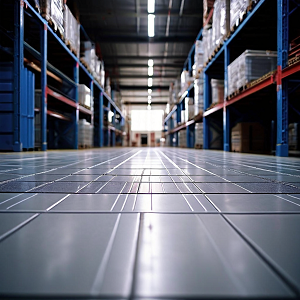 | 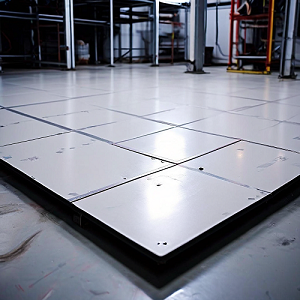 |
Types of Raised Floors
Raised floors come in various types, each designed for specific applications and benefits. Understanding the different types can help in selecting the right system for your needs.
1. Traditional Raised Floors
These are the most common type, consisting of a grid of steel or aluminum pedestals supporting removable floor panels. The height of the floor can vary from a few inches to several feet, depending on the requirements for cable management and HVAC systems.
Advantages:
Flexibility in cable management.
Improved airflow for HVAC systems.
Easy access for maintenance and upgrades.
2. Low Profile Raised Floors
Designed for environments where only a slight elevation is necessary, low profile raised floors are ideal for retrofit projects and spaces with height restrictions. They typically range from 2 to 6 inches in height.
Advantages:
Cost-effective for retrofit applications.
Minimal disruption during installation.
Suitable for spaces with low ceiling height.
3. High-Performance Raised Floors
These are designed for environments with heavy equipment and high traffic, such as data centers and industrial facilities. They feature reinforced panels and stronger pedestals to support substantial loads.
Advantages:
Enhanced durability and load capacity.
Ideal for data centers and industrial applications.
Supports heavy equipment and high traffic.
Advantages of Raised Floors
Raised floors offer a multitude of benefits that make them an attractive choice for various applications. Here are some of the key advantages:
1. Enhanced Cable Management
Raised floors provide ample space for organizing and routing cables, reducing clutter and making maintenance easier. This is especially important in data centers and offices with extensive wiring needs.
2. Improved Airflow and Cooling
The space under raised floors allows for efficient distribution of cooled air, which is crucial in data centers and other environments that generate significant heat. This helps in maintaining optimal temperatures and preventing equipment overheating.
3. Flexibility and Adaptability
Raised floors can be easily reconfigured to accommodate changes in layout or equipment. This adaptability is beneficial in dynamic environments where the infrastructure needs to evolve over time.
4. Easy Access for Maintenance
With removable floor panels, accessing the underlying infrastructure for maintenance, repairs, or upgrades is straightforward. This reduces downtime and ensures that systems remain operational with minimal disruption.
Applications and Uses of Raised Floors
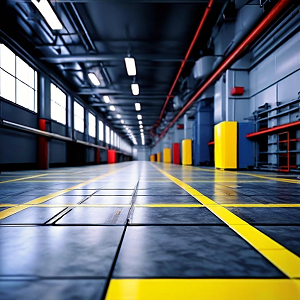 | 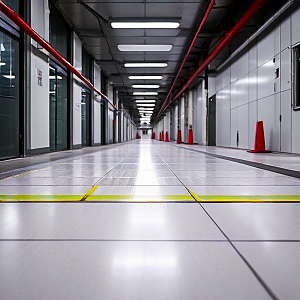 |
Raised floors are employed in a variety of settings, each leveraging the unique advantages they offer. Here are some of the primary applications:
1. Data Centers
Data centers rely on raised floors for efficient cable management and cooling. The ability to route cables and distribute cooled air under the floor is essential for maintaining the performance and reliability of servers and other equipment.
2. Office Buildings
In modern office buildings, raised floors provide the flexibility needed for dynamic work environments. They enable easy reconfiguration of workspaces and efficient cable management for IT and electrical systems.
3. Command and Control Centers
Command and control centers, which often house critical systems and equipment, benefit from the organized cable management and accessibility provided by raised floors. This ensures that systems remain functional and can be quickly serviced when needed.
4. Laboratories and Research Facilities
Raised floors in laboratories and research facilities offer a clean and organized way to manage cables and pipes for various equipment. This is crucial in maintaining a safe and efficient working environment.
Components of Raised Floors
A raised floor system comprises several key components that work together to create the elevated structure. Understanding these components is essential for selecting and installing the right system.
1. Pedestals
Pedestals are vertical supports that determine the height of the raised floor. They are typically adjustable to ensure a level surface and can be made from materials like steel or aluminum for strength and stability.
2. Floor Panels
Floor panels rest on top of the pedestals and form the walking surface. These panels can be made from various materials, including steel, wood-core, or composite materials, depending on the required load capacity and environmental conditions.
3. Stringers
Stringers are horizontal supports that connect the pedestals, providing additional stability and load distribution. They are commonly used in high-performance raised floors where greater structural integrity is needed.
4. Airflow Panels
In environments where cooling is a priority, airflow panels with perforations or grilles are used to allow the passage of conditioned air. These panels help maintain optimal temperatures by directing airflow to specific areas.
Risks and Challenges of Raised Floors
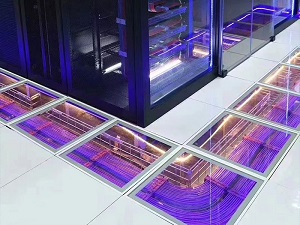 | 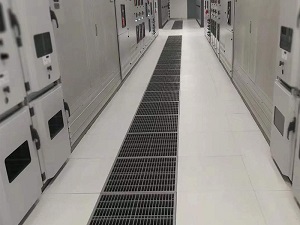 |
While raised floors offer numerous benefits, they also come with certain risks and challenges that need to be addressed to ensure safe and effective use.
1. Load Capacity and Stability
Ensuring that the raised floor system can support the intended load is critical. Overloading the floor can lead to structural failure, posing safety risks and potential damage to equipment.
2. Fire Safety
The void space under raised floors can be a fire hazard if not properly managed. It is essential to implement fire detection and suppression systems to mitigate this risk.
3. Accessibility Issues
While raised floors provide easy access to underlying infrastructure, frequent removal of panels can cause wear and tear. Proper maintenance and high-quality materials are necessary to ensure long-term functionality.
4. Installation and Maintenance Costs
The initial installation of a raised floor system can be costly, and ongoing maintenance is required to keep the system in good condition. Budgeting for these expenses is important in project planning.
Conclusion
Raised floors are a versatile and valuable solution for modern buildings, offering enhanced cable management, improved airflow, and flexibility in layout and design. Understanding the different types of raised floors, their advantages, applications, components, and potential challenges is crucial for making informed decisions in both new constructions and retrofit projects. By addressing these factors, you can ensure that a raised floor system meets your needs and provides long-term benefits.


 Product Search
Product Search






